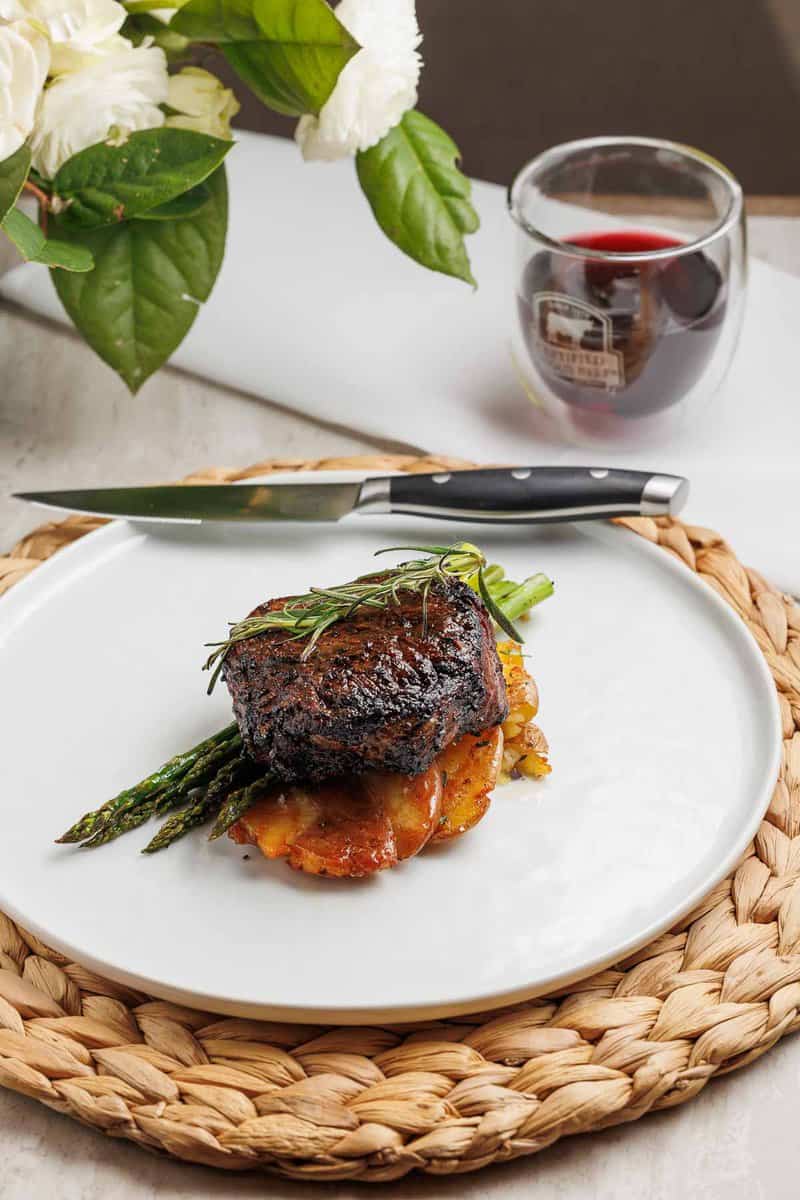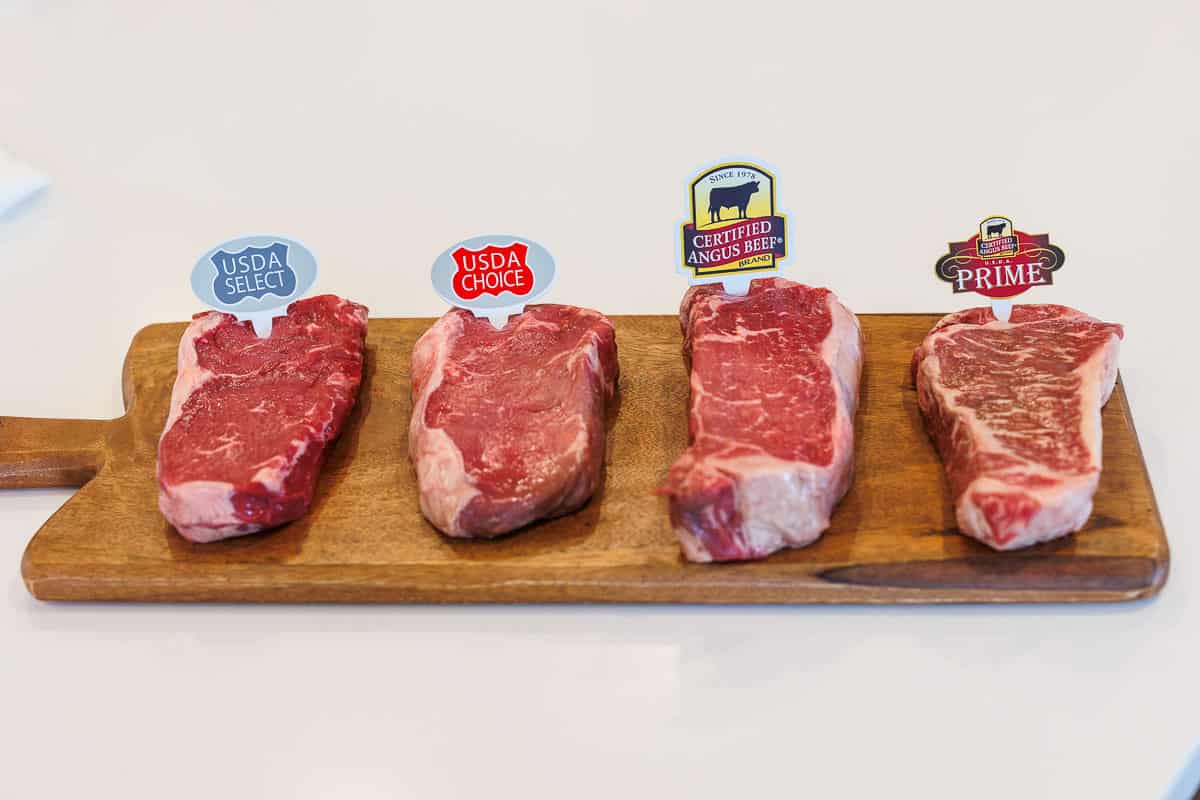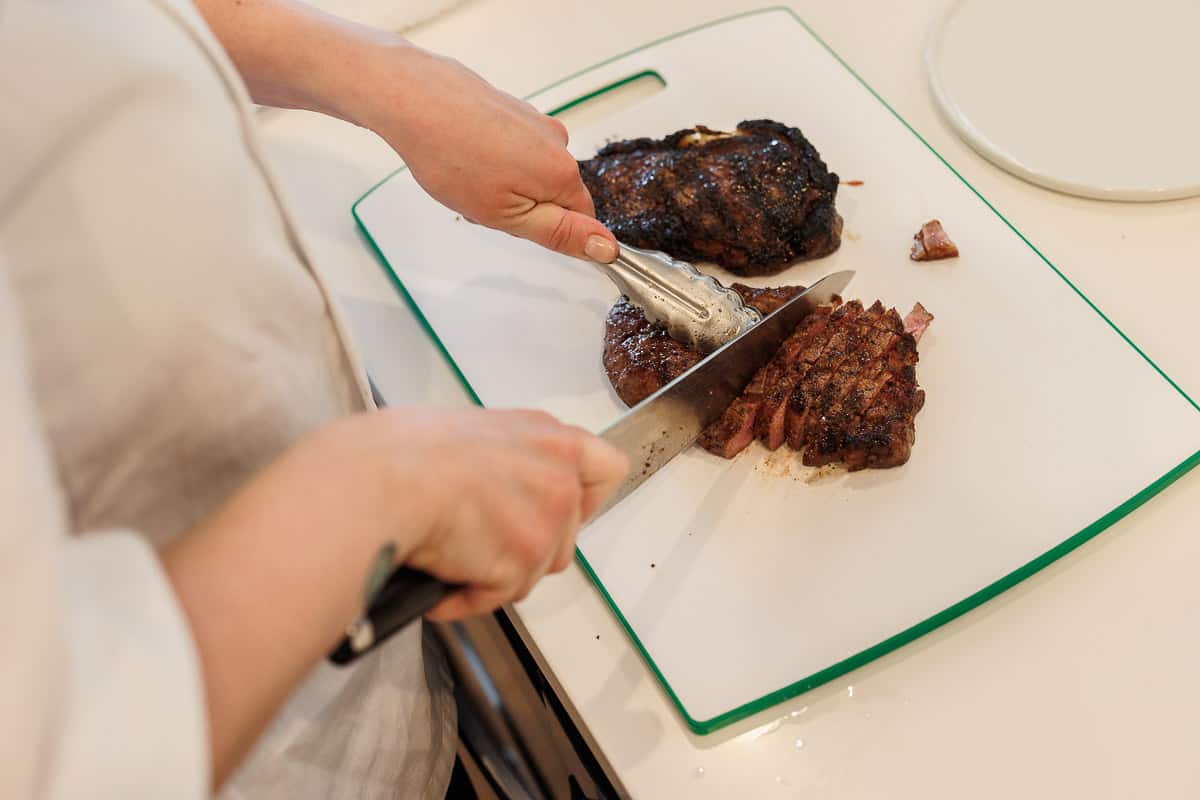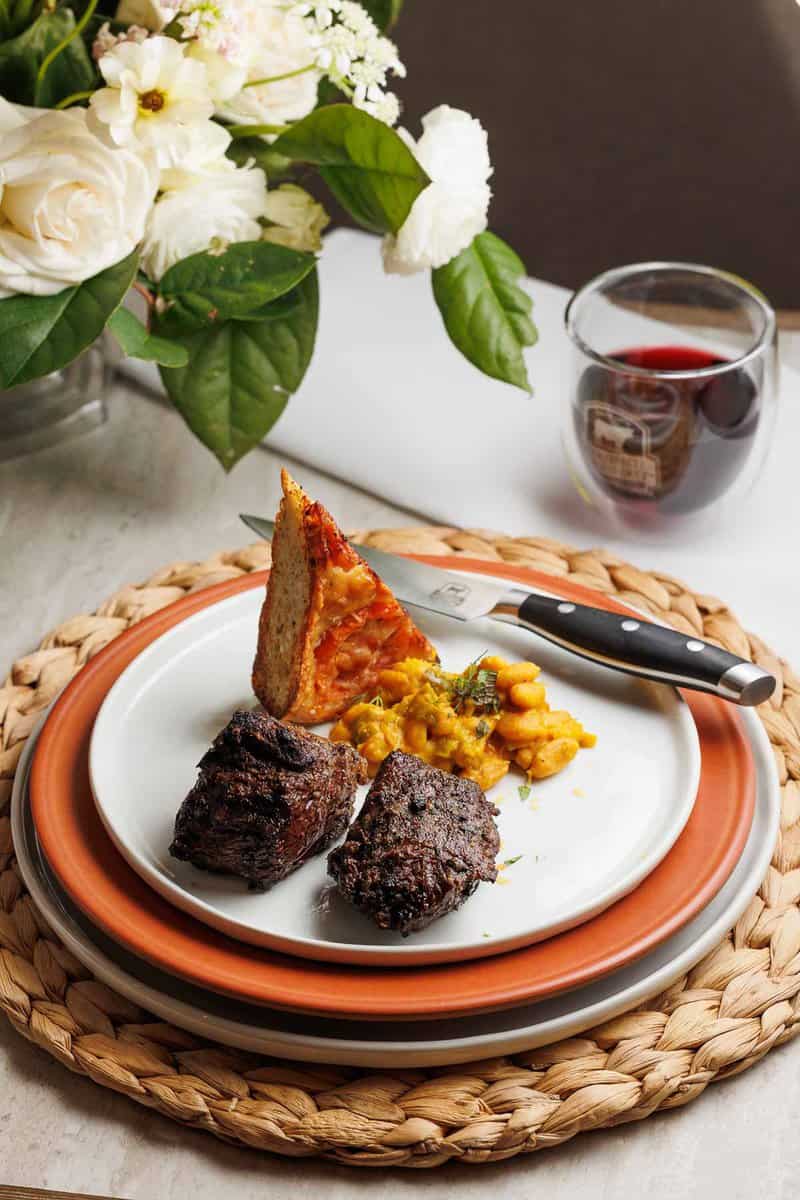Buying beef can be intimidating, but it doesn’t have to be. Understanding different cuts and grades is key to feeling more comfortable and confident at the meat counter. We’ll cover the foundational principles of beef grades so you can make an informed choice at the meat counter.
Table of contents
Who Grades Beef?
While beef inspection for wholesomeness and food safety is required by law, grading for quality is not. Voluntary beef grading is carried out by highly knowledgeable USDA specialists and is paid for by the beef packers. This ensures fair, independent, grading practices.

How is Beef Graded?
There’s an extensive list of specifications inspected when beef is graded, but the primary factor is marbling, or the fat which is intermingled within the beef muscle.
According to the Cattlemen’s Beef Board and National Cattlemen’s Beef Association, “when determining the amount of marbling, a grader will look at the ribeye where the carcass is cut at the 12th & 13th rib juncture. Marbling helps ensure and is a strong visual predictor of beef tenderness, flavor and juiciness and improves the overall palatability of beef.”
Beef Quality Grades
While all beef is inspected, not all beef is graded. In order for beef to hit your plate, it has to be inspected by the USDA for wholesomeness. In addition to being inspected, it’s also graded for quality and consistency—so you know what to expect every time you buy a cut of beef.
Marbling is the main component of USDA beef grading—period. The higher amount of marbling (intramuscular fat) in a cut the more tender, flavorful and juicy it will be. But it’s not just about the degree of marbling, it’s also about how evenly the fat is dispersed throughout a cut.
In addition to marbling, color and texture of meat, and animal age are all taken into account.

Prime
Prime beef is at the top of the USDA grading scale. Prime beef comes from young, well-fed cattle and has an abundance of marbling. Prime is produced in smaller quantities, many of which go directly to the hospitality industry.
Due to it’s marbling and tenderness, prime steaks are great for high-heat and quick-cook methods such as grilling or broiling.
Choice
Choice beef is the runner-up to Prime and makes up most of the beef industry. It has less marbling overall than Prime, but does feature very tender and juicy cuts from the rib and loin area.
Select
Select beef is the most lean, or least marbled grade of beef. It’s not as tender, flavourful or juicy as Prime or Choice. Most select cuts benefit from slow-cooking.
No Roll
“No Roll” beef is commercial ungraded beef that likely lacks tenderness and juiciness.

What is Certified Angus Beef?
Angus is simply a breed of cattle. The Certified Angus Beef ® brand is a brand of beef that comes from the best Angus cattle. To qualify for the brand, cattle must meet 10 quality standards. In fact, only 3 out of 10 cattle meet the brand’s strict requirements, allowing them to guarantee quality and taste, every time.
Certified Angus Beef recognizes and values consumer choice at the meat case. Their traditional brand, the Certified Angus Beef ® brand, consists of beef that reaches the upper echelons of Choice, meaning it’s more marbled than most Choice beef products. The brand also offers Certified Angus Beef ® Prime.
Customers who prefer beef with no added hormones or antibiotics can also find Certified Angus Beef ® Natural and Certified Angus Beef ® Natural Prime at their local grocery stores. It’s the only natural line of beef that is also certified for flavor.
Can You Taste the Difference?
We did a side-by-side taste test of the different grades of beef starting with Select, and moving to Choice. We then tried Certified Angus Beef ® brand and Certified Angus Beef ® Prime, and the difference was shocking. We didn’t taste much difference between Select and Choice, but when we jumped to Certified Angus Beef ® the difference in quality was shocking.
First and foremost, the Certified Angus Beef® steak was far more flavorful. It was juicy and super tender, whereas the Select and Choice cuts of beef seemed slightly watery and lacking in flavor.
This simple taste test solidified our belief that if you’re going to cook beef for dinner, you’ve got to seek out the best quality, and Certified Angus Beef ® is an easy way to ensure you’re getting quality.

Beef Recipes to Try
- Check out our tutorial on how to perfectly cook a Top Sirloin Steak on the stove top.
- Our Grilled Steak Tacos (Tacos al Carbón) with charred scallion salsa are the perfect summer dinner.
- Beef Negimaki makes a fun appetizer or weekend dinner.
- Our recipe for Beef Bulgogi is a fan-favorite, serve it in lettuce cups with rice and kimchi.
Beef Tutorials to Check Out
Got leftover steak? Here’s the best way to reheat steak. Plus, check out this list of Leftover Steak Recipes.
This article is sponsored by Certified Angus Beef. You can find the brand on Instagram, Facebook and on their website.
We’d also like to thank all of the wonderful brands who sponsored the Fresh Air Retreat in Arizona. Zwilling taught us all about their fabulous knives. Grace + Vine Studios changed the way we think about serving our audience. Minute Rice challenged us to think of cooking with rice differently.
From now on, we’ll only be buying Stonyfield yogurt. And AdThrive reignited our fire for all things advertising and SEO. And a HUGE thank you to Liz of The Lemon Bowl and Lauren of The Curious Plate for organizing, planning and hosting such an incredible and educational event.
Photography by Amanda Montgomery of Arrae Creative.
